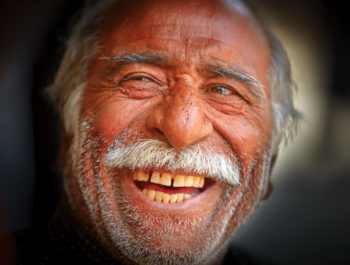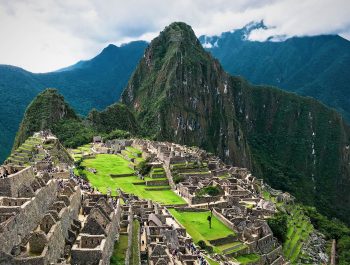Calabria: A Photographer’s Undiscovered Treasure Trove

Traveling to Italy’s Calabria region in the southernmost tip of the Italian peninsula (the “toe of the boot,”) is to travel back in time. This historic region, relatively undiscovered by tourists, may be less known than more famous parts of Italy, but certainly is no less extraordinary.
I first traveled to this region in 2019 and immediately fell in love with the landscapes, medieval villages, olive groves, vineyards, licorice fields, seascapes, and, of course, the food and wine (oh! the food and wine!)!
And, of course, the people. My experiences in Calabria are due in large part to the Italians I met throughout the region. A special thanks goes to Isabella who guided me to unforgettable locations on the Tyrrhenian Coast, and to Fabio, who shared locations along the Ionian Coast. Both introduced me not only to extraordinary locations but to the mayors of small villages, cheese makers, gourmet chefs, sheep farmers, organic growers, and other locals who all added to my understanding, appreciation, and enjoyment of the region.

Calabria is an area of about 6,000 square miles. To put it in perspective, it’s about twice the size of Rhode Island and about one sixth the size of Indiana. The eastern side of the peninsula is bordered by the Ionian Sea and the western side the Tyrrhenian Sea.
The history of the area dates back to ancient times and the region has been influenced by Greek, Etruscan, Phoenician, Roman, Byzantine, Norman, and Aragonese cultures. Many of those influences can be seen in the architecture of medieval villages, castles and fortifications, and especially in the food Calabrian’s enjoy today.

Food is very important to Italians especially so in the Calabrian region. Most of the best farms grow organic foods, and there is tremendous pride in following what comes from the farm all the way to the plate, whether that’s at a family table or a restaurant.
During my October trip, I became friends with Guerino, a lifelong Badolato resident, who offered this tidbit of wisdom: To truly know a people and their culture, you must know how they eat. Understanding the cultural significance of food in the region is helpful in understanding much of what Calabria is about.
This predominantly agricultural region of Italy is a place where life’s pace is slower. People take pride in their work, whether it’s farmers, like Vincenzo, whose organically grown clementines are known throughout the region, or Paulo, the mayor of Terravecchia, who is a cheesemaker by trade, or the family business that for six generations has produced some of the finest virgin olive oil made anywhere in the world.

Spending time with these Calabrians was a highlight of my travels. Last October, I met the farmer, Uncle Vincenzo, who walked me through his clementine orchard. The pride and affection he had for his orchard was evident in the way he spoke about these trees. He gently picked and offered me a clementine and I ate, juice dripping from my chin, as he told me how each day he walks his orchard and talks with his trees. There are too many for him to speak directly to each one, so, he said, he speaks to the tree at the head of each row and asks them to pass his greeting to the others.
Everyone involved in the farming and production of food takes pride in their role, from the organic farmer to the processors of virgin olive oil, to the vintner, to the chefs and restauranteurs who prepare and present meals, and ultimately to all who break bread together. Meal time in Italy is a social experience to be savored and enjoyed with family and friends. I experienced this first hand during many meals with Calabrian’s. I learned to taste the sea in wine made from seaside vineyards, to distinguish the nuanced flavors in freshly made virgin olive oil, and to savor the complexities of cheese as it melted in my mouth, appreciating it all the more for having watched Paulo make it by hand in the old traditional ways.
It’s this emphasis on what’s important – food, family, relationship, pride in workmanship, and a zest for life – that permeates every aspect of the culture and what I find so appealing about traveling and photographing in this part of the world.

Of the many medieval villages I’ve explored and photographed, among my favorites are Pentedattilo, Cariati, Terravecchia, Badolato, Bivongi, and Stilo. The feelings I experienced wandering the streets of these communities ranged from awe to a sense of romance, otherworldliness, and timelessness. Photographing in the streets of these old villages that countless others have traversed for centuries, was a profound experience.
Similar feelings filled me when photographing the mountain caves near Stilo where ascetic Byzantine monks once lived like hermits, while creating the Cattolica di Stilo, a small mountain church built in the 9th century and considered one of the most unique examples of Byzantine architecture in southern Italy.
Earthquakes over the past 300 years have destroyed homes and farms, forcing many to leave these mountain villages, and some, like Greek-influenced Pentedattilo, are nearly completely abandoned.
In other villages, like Badolato, which enjoys a resurgence today, one can still find ruins from previous destruction.

Badolato was my home for several days last October and I developed a special affinity for this charming village and her residents. Each morning I awoke in accommodations that dated back centuries and stepped out onto the stone streets to make my way to the center of the village. Along the narrow winding way I passed other homes, a wine shop, a grocery, a violin maker’s workshop, a Pharmacia, and I passed locals who offered a pleasant, “Buongiorno.” Each day I reserved time to wander the village while making day trips to nearby villages, Stilo and Bivongi.
Badolato has become known for the exemplary way in which it welcomes refugees, the majority who come from conflict-torn nations such as Syria, Afghanistan, Iraq, and others. It’s an especially unique example of a medieval village that is reemerging in the 21st century as a haven for those in need who are rebuilding their lives. Badolato has become a model for welcoming refugees by assisting with housing and transportation, as well as providing services such as language classes and education for adults and children.

Among my favorite coastal locations are the sea towns of Tropea, Scilla, Diamante, and Chianalea along the Tyrrhenian Coast, and medieval structures including ruins at Amendolara, Le Castella Aragonese in Isola di Capo Rizzuto, and Castello Di Roseto in Roseto Capo Spulico on the Ionian Coast.
Le Castella Aragonese built by the Greeks in the 5th-century BC and later used by the Romans, is surrounded by the sea and is one of the more dramatic fortresses to photograph. After the fall of Rome, other empires, including the Normans, Byzantines, and Angevins, occupied and expanded the castle until it was abandoned during the 9th-century after a raid by Arab forces left it seriously damaged.

Diamante on the Tyrrhenian Coast, also known as the City of Murals, is famous for the large murals painted throughout the village, while Scilla and Chianalea are known for their quaint fishing ports and homes with shelters for fishing boats built beneath the houses directly on the seashore. Calabria offers a striking array of photography subjects including breathtaking seascapes, mountain vistas, architectural marvels, and the textures, shadows, and lines found in the interiors of old villages and fortresses.
I especially enjoyed photographing the murals painted throughout Diamante, and the rugged castles and fortresses along the Ionian Coast. Whether walking the narrow streets and alleys of ancient villages, or walking the shores near Amendolara, the areas are ripe with photo opportunities for the attentive photographer. As a bonus, I was pleased to find mostly local residents (and few tourists) in most areas.

I look forward to returning to Calabria in September to share this truly magical land with fellow photographers in two photography tours, one on the Tyrrhenian Coast and one on the Ionian Coast. The experience is truly magical and I can’t wait to share it with others, who I hope will feel as I did, which was that I had discovered long lost hidden treasures!
The photos shared here were made with the Fuji X-T4 and the iPhone 14 Pro Max. Infrared photos were made with the iPhone 14 Pro Max and a Fuji X-T2 converted to 720nm infrared.
To see more photos of the region and for details about upcoming photo tours, visit my website.

Updated Bio
Rad A. Drew, an Indianapolis-based professional photographer since 2010, is an iPhone guru who also enjoys creating with traditional cameras and loves making infrared images with both the iPhone and converted Fuji cameras. He is a workshop leader, teacher, conference presenter, and frequent speaker at camera clubs around the world.
Learn more about Rad by visiting his website or emailing him at [email protected].
Rad Drew
April 2024
INDIANAPOLIS, IN
Photography has always been synonymous with fun and magic. As a kid, it was fun to compose, fun to capture, magic to develop and process, and fun to share. It was fun to seek out photos and to engage people, and magic to travel to new lands or find the unusual in familiar places. It was magic to convey an emotion or make a point and touch others through visual imagery that I created. As an adult, photography continues to be more fun and magical than I ever dreamed! Despite changes in technology that have occurred during my lifetime, the esthetic of photography remains much the same. The creative mind of the photographer is still the most important element in a great photo. The camera doesn’t create a photograph any more than a hammer designs a building; it’s merely a tool that allows us to create our vision. Today, my camera bag holds two mirrorless cameras, an infrared camera, a point-and-shoot, and an iPhone. Of these tools, I credit my use of iPhones since 2010 with providing more opportunities to practice the esthetics of photography, making me a better photographer regardless of the camera I'm using. And photography has never been more fun and magical!








